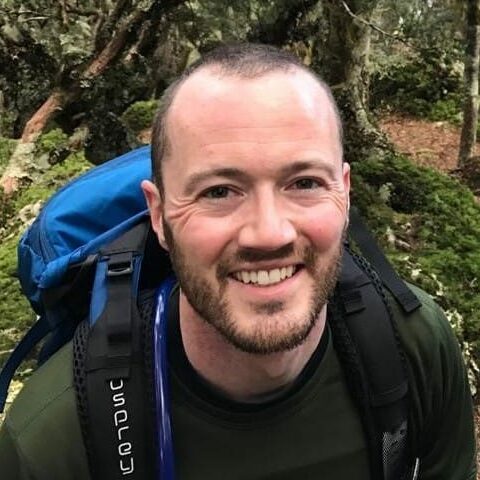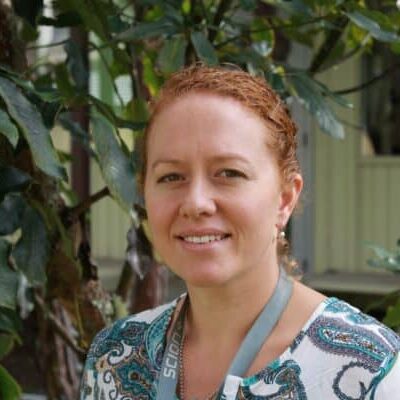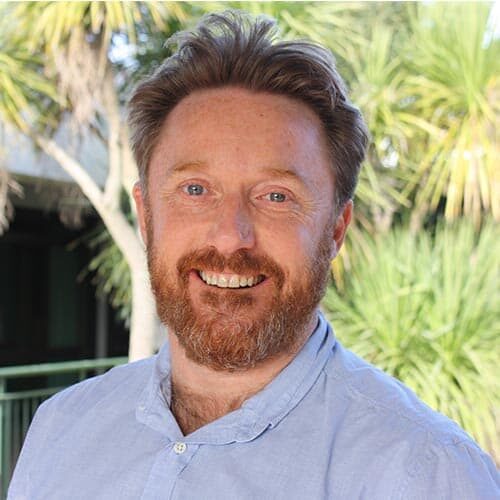Luitgard Schwendenmann
University of Auckland
Developing standardised measures to quantify the impact both kauri dieback and myrtle rust are having on the wider ecosystem.
The inventory of research outputs and resources can be found here:
We need to understand kauri dieback and myrtle rust better if we want to protect our ngahere (forest).
That’s why the goal of the Risk Assessment & Ecosystem Impacts team was to identify the effects of these diseases and management, as well as which species and ecosystems are most at risk. More detailed information will allow us to better prioritise conservation efforts and management decisions.
If we get really good data now, we will be better informed in 10, 50 and 100 years’ time about the changes in the forest ecosystems.
Our mahi (work) took a holistic view of both the ecosystem and the pathogens – something that has long been advocated for by affected Māori communities. We were looking at the pathogen impacts on everything from ecosystem functions to human relationships, considering the effects of not only the pathogens, but also the tools and systems used to manage them.
Throughout our research we built on previous work and strengthening the collaboration between kaupapa Māori and Western science approaches. This made our results more meaningful to a wider range of communities and ecosystems.
With this research we established indicators for assessing the impacts that kauri dieback, myrtle rust and their management have on kauri and Myrtaceae ecosystems. We took a holistic view that considered impacts on:
We aimed to do this in a way that integrated mātauranga Māori and Western science, recognising the value that each brought and helping to ensure our indicators are relevant and meaningful for mana whenua, communities, government, researchers and all others who will use them.
This work built upon other relevant indicator frameworks, including: the MPI-funded projects to assess risks and impacts of myrtle rust, the Cultural Health Index, DOC biodiversity indicators. We integrated these indicator frameworks and adapted them as necessary to provide a holistic view of ecosystem health.
This research team characterised affected kauri and Myrtaceae ecosystems so we could understand the risks and impacts of the pathogens, from both a Western science and mātauranga Māori perspective. We needed to have a baseline of what the ecosystems looked like before the effects of severe disease, so we know what changes, and how it changes, over time.
We were not only looking at the effects of the diseases, but also what we were doing to try and control the diseases. These actions can have a separate set of consequences and need to be recorded so we know how to best act in the future.
This mahi (work) built on the kauri dieback and myrtle rust science plans. It also aligned with the Beyond Myrtle Rust programme looking at broad-scale impacts of Austropuccinia psidii on ecosystem functions.
Humans are part of forest ecosystems too. While it is widely acknowledged that our actions can have a huge impact on native flora and fauna, the same can be said in reverse.
If we visit a kauri forest where the trees are dying, the canopy thinning, will it change how we feel about the ngahere? Will we visit less, reducing the income of surrounding businesses? If we take our children to nature less, will they still care about its preservation in 50 years?
Both kauri and some Myrtaceae species are extremely important to different communities throughout Aotearoa, so this research team looked into the social, cultural and economic effects of their diseases and related management efforts.
But before we did, we needed to figure out how to actually measure these effects. Previous research has showed a lack of agreement about how to sample this data, let alone the baseline data itself. So, for both kauri and myrtles we asked:
This research area was intentionally delayed a year, so Te Whakahononga had time to properly engage with mana whenua and enable their input into the research.
In the final workstream we brought together findings from the other research teams to create a comprehensive risk assessment for kauri dieback and myrtle rust.
We established a flexible risk assessment framework to enable a preliminary risk assessment to incorporate additional findings from our other workstreams and other Ngā Rakau Taketake and BioHeritage National Science Challenge investments.

Luitgard Schwendenmann

Simon Wegner

Rebecca McDougal

Nick Waipara